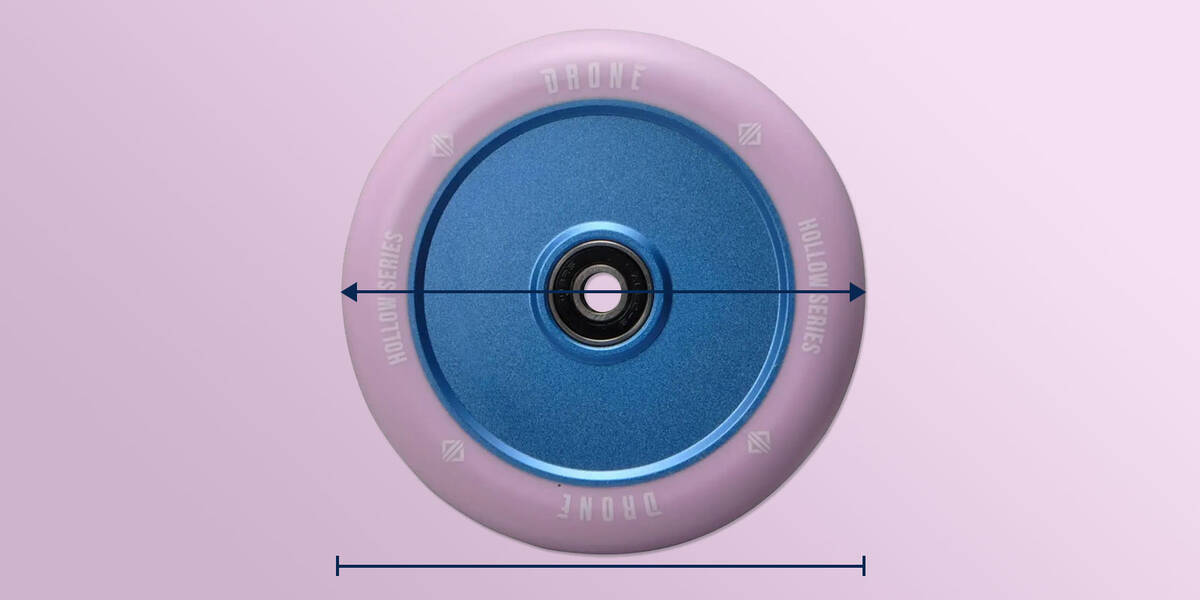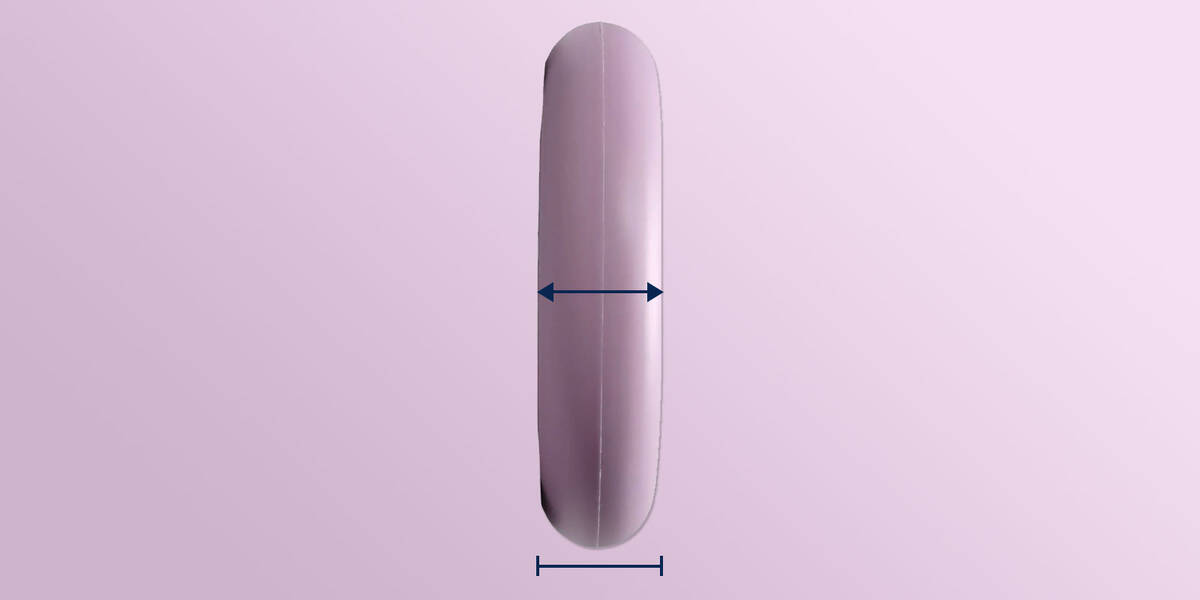Scooter Forks Buying Guide
Get ready for our comprehensive guide to buying pro scooter forks. We'll cover all the most important things to consider before deciding on a new freestyle scooter fork. These include compatibility, wheel sizes, wheel offset, and more.
A perfectly dialed pro scooter needs the best fork. Scooter forks are responsible for holding the front wheel of your scooter, and the specifications of your fork determine the size of wheels you can mount – both in terms of wheel width and diameter. Stay tuned for some useful advice on stunt scooter forks!
Scooter Fork Basics

The fork passes through the headset and the headtube of your deck. The front wheel is mounted on the fork, and on top of the fork, the compression system, clamps, and bars are mounted. Your fork significantly influences your overall setup because it determines the size of wheels you can mount on your scooter.
Today, most scooter forks are made from a single piece of aluminum, strengthened through various heat treatments. Once common but now obsolete are the threaded scooter forks made of steel. These older forks fell out of favor because they were both less durable and heavier.
Scooter forks that work with SCS, HIC, and IHC have a built-in starnut inside the fork tube. The compression bolt is threaded into this starnut when installing the compression system.
ICS setups are different because, in ICS, the starnut is placed inside the bar, and the compression bolt is mounted through the underside of the fork before the wheel is installed. If you have any doubts about which compression system you are running, it's a good idea to get an overview by checking out our comprehensive guide:
Weight, wheel size, wheel offset, and compression are the key factors to consider when purchasing a new scooter front fork. In this guide, you'll learn about these subjects in detail.
We always stock high-quality scooter forks from the best brands in the industry, and we most likely have one that suits your needs. If you are ready to make a choice, we'd like to invite you over to our selection of high quality forks for pro scooters:
Scooter Forks and Wheel Sizes

When purchasing a new fork for your scooter, always ensure compatibility with the wheels. Match the wheel size in terms of diameter and width. Specifically, make sure the wheel diameter does not exceed the largest wheel diameter specified for the fork. Additionally, ensure that the width of the wheel hub matches or is smaller than the fork’s specified wheel size.
Wheel Diameter

Most scooter forks are compatible with wheel diameters of 110 mm, the most common wheel diameter. However, many forks can accommodate scooter wheels as large as 125 mm. Just ensure that your wheels do not exceed the fork's capacity, and you'll be good to go.
For example, if you're using 115 mm diameter wheels, it's essential to verify that your fork can accommodate wheels of that size or larger.
Wheel Core Width

Scooter forks are designed to accommodate wheels of specific widths, typically ranging from 24 to 30 mm. Between these, we find scooter wheels with a width of 26 and 28 mm.
Quite often, scooter forks come with spacers included so that a fork capable of holding 30 mm wide wheels can also accommodate 24, 26, and 28 mm wheels when using the right spacers.
You can mount wheels that are narrower than the maximum wheel hub width of a scooter fork, but if the wheel is wider (e.g., a 30 mm wide wheel for a 24 mm wide fork), it will not fit.
Fork Axle Diameter and Length

The most common wheel axles for scooters have a diameter of 8 mm, but some forks are also compatible with scooter wheel axles that have a diameter of 12 mm. The most common bearing size for scooters is 608 bearings, where the compatible axle diameter is 8 mm. Forks compatible with the 12 standard, often come with 8 mm adapters included so you can use standard 8 mm axles as well.
The appropriate axle length depends on the width of your scooter fork. You'll need an axle that is at least as long as the width of your fork, measured from the outside.
What Is a 12 Standard Scooter Fork?
12STD scooter forks are designed to accommodate wheel axles with a diameter of 12 mm. With such a large axle diameter, you'll need to look for the bearing size 6001.
A 12-standard pro scooter setup typically features larger and wider wheels. In general, you can expect 12STD pro scooter setups to offer enhanced speed, stability, and durability, but these benefits come with extra weight and less agility.
Many 12 standard forks come with spacers that make it possible to mount 8 mm axles and regular 608 bearings on the fork.
If converting to 12STD, you need to be aware that, in addition to the 12STD fork, you'll need wheels that fit 6001 bearings and a deck that can accommodate the larger wheels and wheel axles as well. You'll find what you need in our selection:
Wheel Offset on Pro Scooter Forks

Measured in millimeters, wheel offset refers to the distance from the center of the fork's turning axis to the wheel axle. Wheel offset, also known as the rake, indicates how much the wheel is positioned in front of the fork.
The wheel offset significantly influences the stability and agility of your scooter because it increases the wheelbase (the distance between the front and rear wheels).
A 10 mm wheel offset is the most common. It enhances stability and control in your overall setup, making steering the scooter easier and more predictable.
Zero-offset forks are very agile and responsive. With zero offset, the front wheel is closer to the rider, making the scooter more agile and responsive. Nose manuals are easier to perform with zero-offset forks because your feet are closer to the ground, making it easier to balance. Foot jams are also easier to execute since a larger part of the wheel lends itself to getting jammed.
Scooter Forks & Compression Systems
Forks for SCS and HIC compression are the same. They have a starnut inside the fork tube into which a compression bolt is screwed. The key difference lies in the compression components surrounding the forks: SCS uses an SCS clamp, while HIC employs an HIC shim.
IHC compression forks have a narrower fork tube, making them ideal for riders who prioritize minimizing the total weight of their setup. In most cases, IHC forks are the lightest scooter forks.
- SCS Scooter Forks: Standard & oversized bars without slits and oversized or standard sized SCS clamps
- HIC Scooter Forks: Oversized bars with slits and oversized non-SCS clamps
- IHC Scooter Forks: Standard sized bars and standard sized non-SCS clamps
In ICS and ICS-10 compatible forks, the compression bolt is installed from the bottom of the fork and threaded into a starnut located inside the bars. While ICS setups are not very common in custom-built scooters, they are known for being extremely lightweight compared to other compression systems.
If you have any doubts about the compatibility between different forks, these guides may be helpful:
